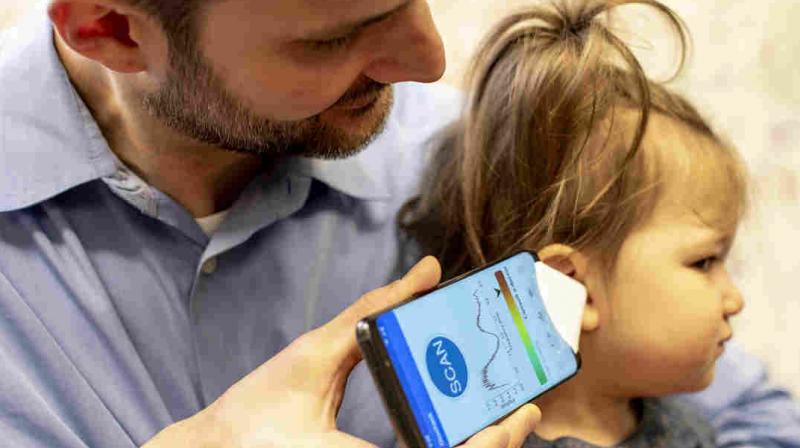Now, a new phone app detects ear infections in children
This is on par with current methods used by specialists to detect fluid in the middle ear.

Researchers have created a new smartphone app, which can detect fluid behind the eardrum by using a piece of paper, the phone's microphone and a speaker.
According to the study published in the Journal of Translational Medicine, infection in ear occurs when fluid builds up in the middle ear behind the eardrum.
This build-up is also common in another condition called otitis media with effusion. Any kind of fluid build-up can be painful and make it hard for children to hear, which can be especially detrimental when they are learning to talk.
These conditions are hard to diagnose because they have vague symptoms. Sometimes children tug on their ears or have fevers, and sometimes there are no symptoms. In addition, young children may not be able to describe where are they feeling hurt.
Now, with the invention of new Smartphone app parents can detect fluid behind the eardrum.
The Smartphone makes a series of soft audible chirps into the ear through a small paper funnel and, depending on the way the chirps are reflected back to the phone, the app determines the likelihood of fluid present with a probability of detection of 85 per cent.
This is on par with current methods used by specialists to detect fluid in the middle ear, which involve specialized tools that use acoustics or a puff of air.
"Designing an accurate screening tool on something as ubiquitous as a Smartphone can be game-changing for parents as well as health care providers in resource-limited regions. A key advantage of our technology is that it does not require any additional hardware other than a piece of paper and a software app running on the smartphone," said co-author of the study, Shyam Gollakota
Once diagnosed, ear infections can be easily treated with observation or antibiotics, and persistent fluid can be monitored or drained by a doctor to relieve symptoms of pain or hearing loss. A quick screening at home could help parents decide whether or not they need to take their child to the doctor.
This app works by sending sounds into the ear and measuring how those sound waves change as they bounce off the eardrum.
"It's like tapping a wine glass. Depending on how much liquid is in it, you get different sounds. Using machine learning on these sounds, we can detect the presence of liquid, "said co-first author Justin Chan.
Because the researchers want parents to be able to use this technology at home, the team trained parents on how to use the system on their own children. Parents and doctors folded paper funnels, tested 25 ears and compared the results. Both parents and doctors successfully detected the six fluid-filled ears.
The team also tested the algorithm on a variety of smartphones and used different types of paper to make the funnel. The results were consistent regardless of phone or paper type.

